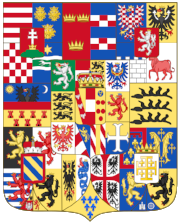Rising to popularity in the late 18th century, Harmonien or wind ensembles were originally a vehicle for displaying the power and political allegiances of their noble patrons. Harmoniemusik included arrangements of contemporary theatrical, operatic and symphonic works, as well as original music for winds composed for concert performance and ceremonial occasions. As patronage declined in the face of the upheavals of the Napoleonic wars and cultural power shifted to the public sphere, increasingly entrepreneurial musicians continued to produce Harmoniemusik reflecting the popular tastes and political atmosphere of the time.
In Decline and Fall, Boxwood & Brass explores some of the politically-loaded music produced during the decline of the Holy Roman Empire. Mozart’s 1791 opera of intrigue and clemency in ancient Rome was commissioned for the coronation of Holy Roman Emperor Leopold II as King of Bohemia, an event intended to help stabilise the Empire in the wake of the French Revolution. The opera remained extremely popular into the 1800s, with at least fifteen arrangements for winds being made. We have chosen one by Joseph Triebensee, principal oboist in Vienna and Kapellmeister for the Prince of Leichtenstein’s Harmonie. His exceptional arrangement, drawn from Act I of the opera, ends with the central character Sesto battling his loyalty to his Emperor while Rome burns around him: a dramatically-charged scene with which a population living under the threat of conquest would surely have identified. Triebensee’s Trauermarsch was composed for the death of his patron in 1805, an example of Harmoniemusik fulfilling its original ceremonial role, but also symbolic of the death of the Holy Roman Empire itself, which came in 1806.
In 1809–10, against the background of Napoleon’s second occupation of Vienna, Beethoven wrote his overture and incidental music for Goethe’s 1787 play Egmont, a tale of tyranny, revolutionary struggle and eventual freedom. Today, only the overture is regularly performed. For this programme, we have taken and 1812 Viennese arrangement by Friedrich Starke, a horn player who performed with Beethoven, and added a number of movements from the beautiful but rarely-heard incidental music, newly created by our bassoonist Robert Percival.
Our tendency to view Beethoven’s 7th symphony through Wagner’s description ‘apotheosis of the dance’ has largely obscured its original, more militaristic associations. Premiered at a benefit concert for the widows of the Battle of Hannau, an important tactical victory for Napoleon that frustrated hopes for a swift end to the wars, the Symphony immediately achieved huge popularity among the Viennese public. From the galloping hooves evoked by the rhythms of the first movement, through the rays of hope that cut through the slow funeral march of the second, to the rumblings of discontent that underpin the harmony throughout, it is easy to see how Beethoven’s work captured the mood of the time. This arrangement for winds, an astonishing tour de force, was published concurrently with the full orchestral score, almost certainly with the composer’s full knowledge.
Decline and Fall will be touring during 2018 to Durham and Huddersfield, as well as York later this year. Please see our Diary for details.
Beethoven arr. Starke and Percival: Egmont: Overture and Incidental Music
Mozart arr. Triebensee: excerpts from La Clemenza di Tito
interval
Joseph Triebensee: Trauermarsch for the funeral of Prince Alois von Leichtenstein
Beethoven arr. anon: Symphony No. 7
Greater Coat of Arms of Leopold II and Francis II, Holy Roman Emperors by Tom Lemmens (in collaboration with Heralder) - Otto Posse. Die Siegel der deutschen Kaiser und Könige v. 4. Inescutcheon: [1], [2]



